Melanistic masks are caused by Em, the dominant allele at the E locus. Here, we take a look at the different variations and the genetics of melanistic masks in dogs.
What is a Melanistic Mask?
The Em allele at the E locus causes a mask of eumelanin on the muzzle.
These (eu)melanistic masks can stay very small or they can get very large and even cause heavy shading on other parts of the dog’s body, like the ears, underside, chest, or lower legs.
A mask will always show the base color of eumelanin, it will be either black, brown, blue, or lilac.
Masks are only visible on top of yellow areas, they only appear in patterned dogs with clear sable, shaded sable, agouti, black saddle, or tan point. Solid black or brown dogs can still have an Em allele, but you can’t see their mask on their already solid dark coat.
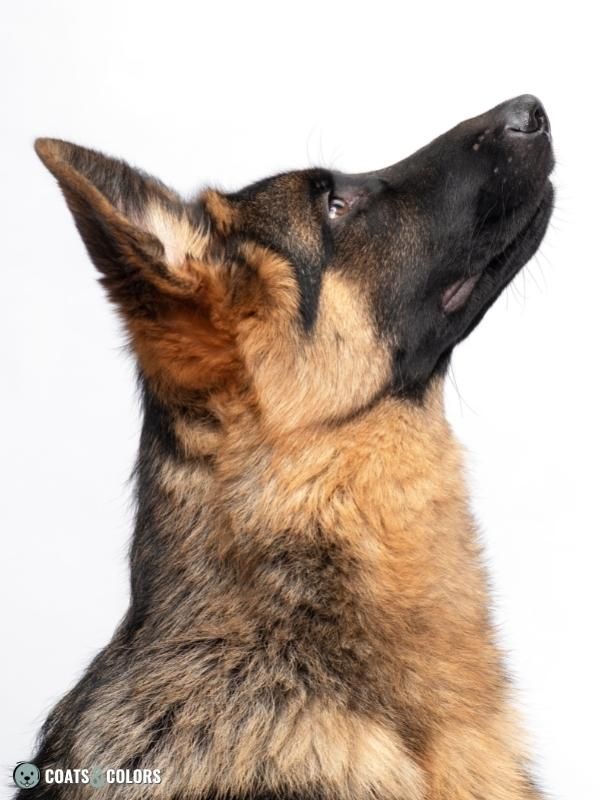

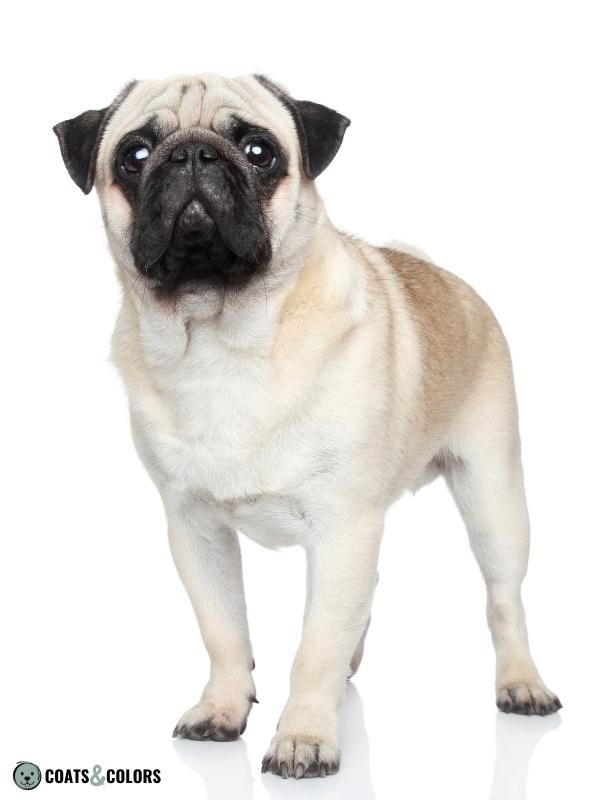
The Em Allele
The extension locus is part of the pigment type switching system. Different variants of this gene cause different amounts of eumelanin in the coat.
Emask or short Em is the dominant allele in this series and is responsible for a melanistic mask.
Masking from Em is an autosomal dominant trait.
One copy of Em is enough to produce a melanistic muzzle phenotype[1].
Many dog breeds like Pugs, Boxers, Skye Terriers, Keeshonds, Deerhounds, Cane Corso, Belgian Shepherds, or German Shepherds have a very high allele frequency of Em. Some breeds are even fixed for homozygous Em/Em, because their breed standards require all dogs to have a black muzzle[2].
Dogs with an Em/- genotype can be carriers of any of the other alleles at this locus (Em/E, Em/eA, Em/eG, Em/eH, or Em/e). Homozygous dogs (Em/Em) can only produce masked puppies (Em/-).
Having an Em allele is a fairly reliable predictor for a dog to express a dark face mask.
However, not all dogs that test as Em/- have a mask. And some dogs with E/- still express a dark (puppy) mask. So we haven’t solved the whole puzzle behind black masks in dogs yet.
Some people told me that masked dogs that carry domino or recessive red (Em/eA, Em/eG, or Em/e) sometimes express lighter masks than their Em/Em or Em/E siblings.
We also don’t know what determines the size of a mask and why some dogs have extended black masking (copy number doesn’t matter, Em/Em does not produce more masking than Em/E, that much is clear from countless tested dogs). So there is more to discover about dark muzzles in dogs.
When Will A Dog Be Masked?
To have a visible dark mask, a dog has to be able to express its A locus pattern.
So it has to be kbr/- (brindle-patterned) or ky/ky (normal-patterned) at the K locus. Masks are only visible “on top” of clear sable, shaded sable, agouti, saddle tan, or tan point (with or without brindle).

Masks may not be visible if a dog has too much white on its face.
Example: Many Bull Terriers and Dogo Argentino seem to be Em/-, but due to their extreme white spotting, the lack of pigment in the coat often prevents the mask phenotype[2].
Even some minor white on the front of the muzzle can be enough to erase a smaller mask.
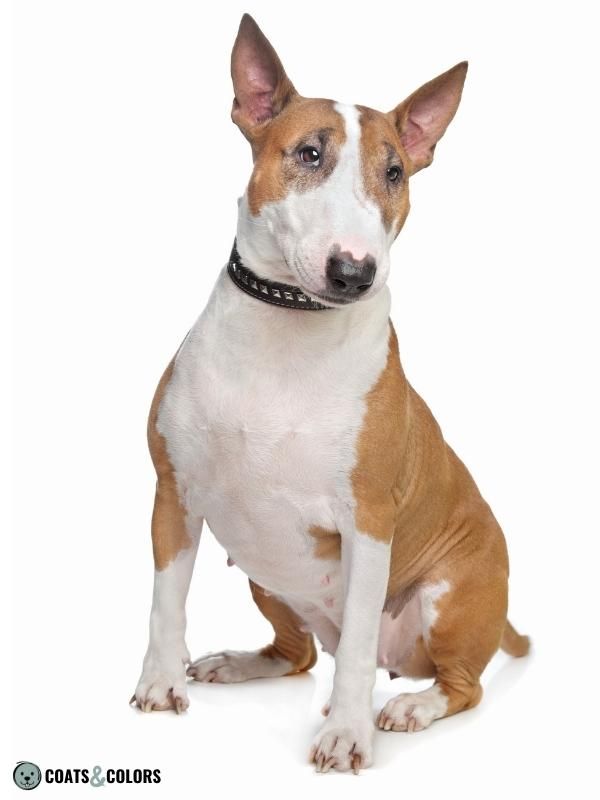

A black mask is also not visible on a solid black dog (same goes for a blue mask on a blue dog, a brown mask on a brown dog, or a lilac mask on a lilac dog).
Example: Masks are present in the genotype, but not visible on the solid black variety in breeds like German Shepherd Dogs or Pugs!
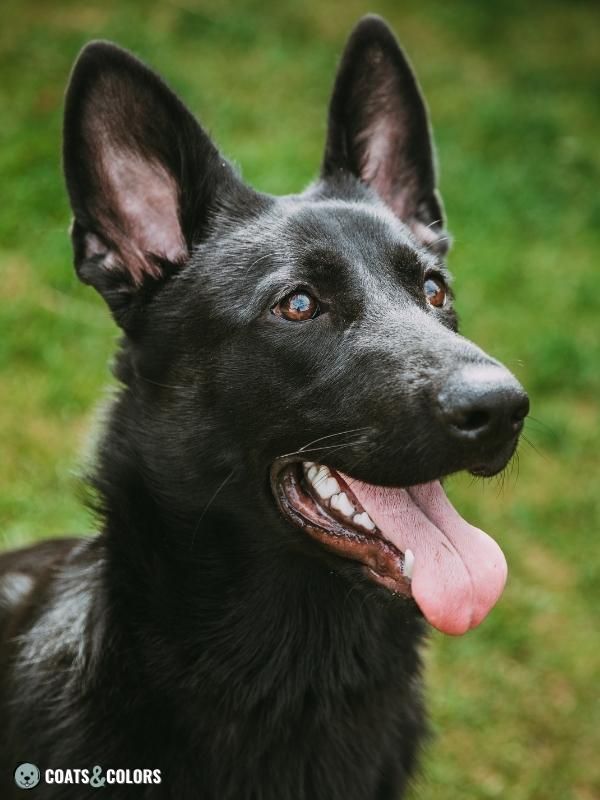

So for a melanistic mask to be fully visible, the dog can’t be dominant black (KB/-), recessive black (a/a), or have too extreme white spotting (from extended piebald or whitehead).
Variability of Melanistic Masks
Mask expression can vary in size, color, and look different in different base patterns.

Mask Size Variation
On average, masks cover the dog’s muzzle and extend into the area around the eyes, and the forehead up to the ears. But masks vary greatly in size, and we know of a wide range of possible expressions.
In many breeds, the desired dimensions of a dark face mask are described in detail in the breed standard. Too large or too small masks are selected against, and purebred dogs of certain breeds tend to have a somewhat uniform mask phenotype. This tells us that mask extension is controlled by genetics.

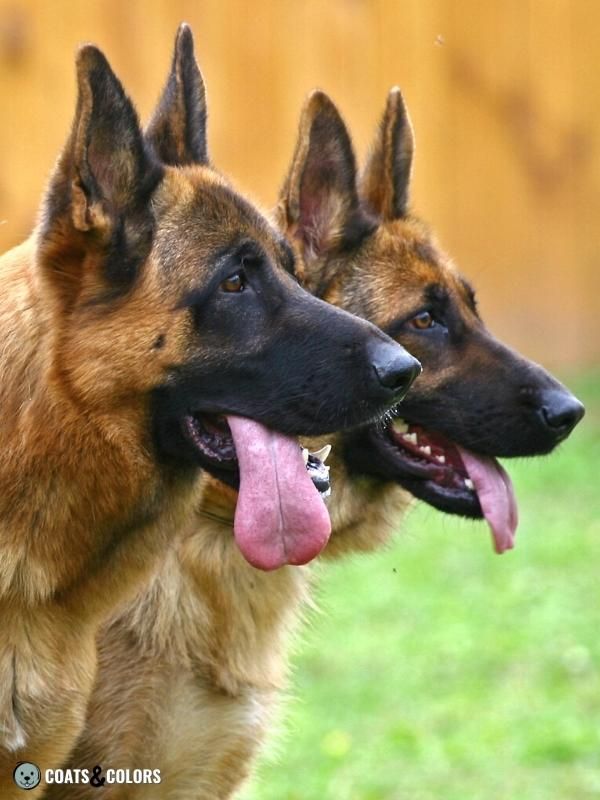
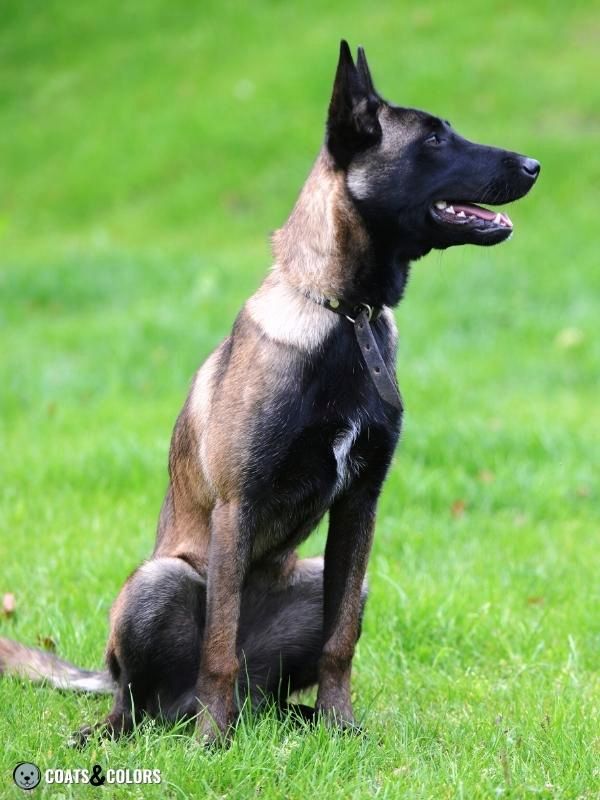
A very common pattern is a defined mask that covers the muzzle and eyes in clear sable dogs like Pugs, Briards, Great Danes, Rhodesian Ridgebacks, Bullmastiffs, Boxers or Mastiffs.
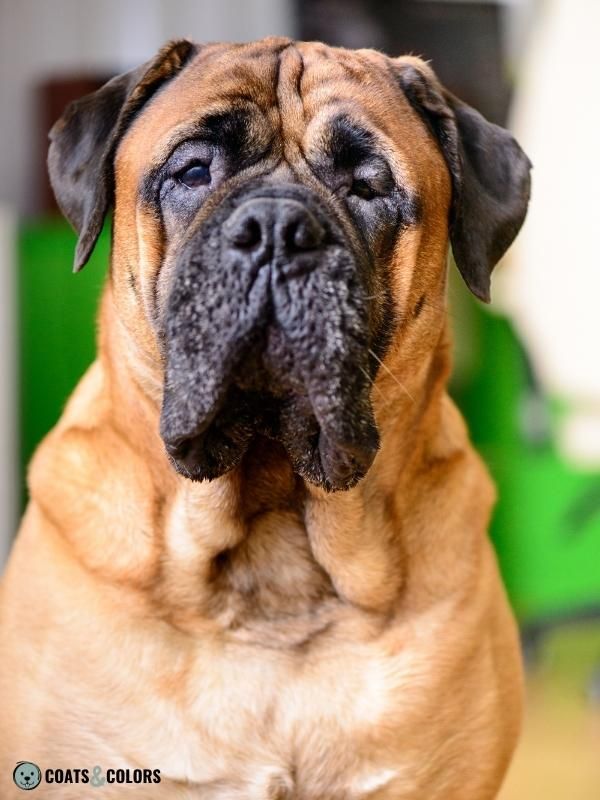
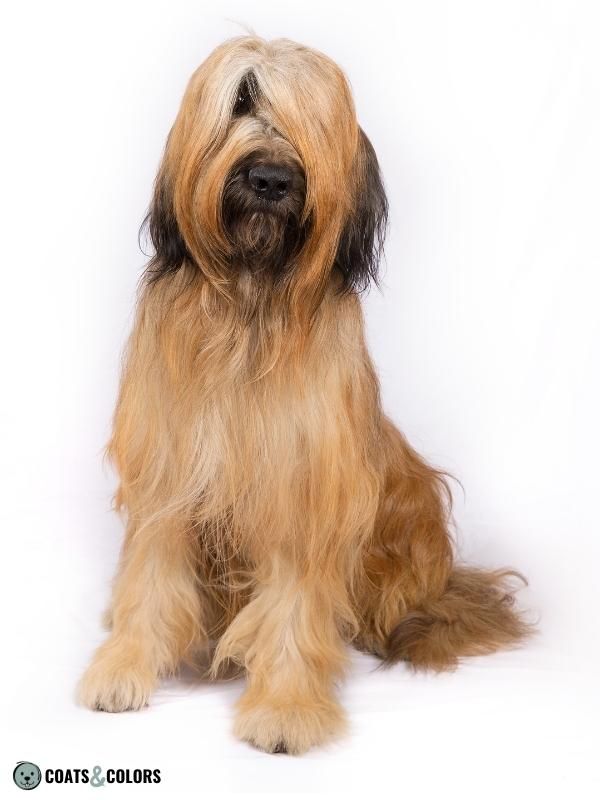

Melanistic masks can be very minimal and barely cover the muzzle or reach the corner of the mouth. Or they can extend and cause heavy dark shading on the ventral surface.
Dogs with extreme masks sometimes even have more shading on their underside (e.g. belly and inside of the legs) than on their back, where you would expect it in a sable dog.
Dogs with extended black masks can be found in breeds like Belgian Malinois, Bavarian Mountain Hound, Leonbergers, or American Akita. But this really happens in a lot of breeds.
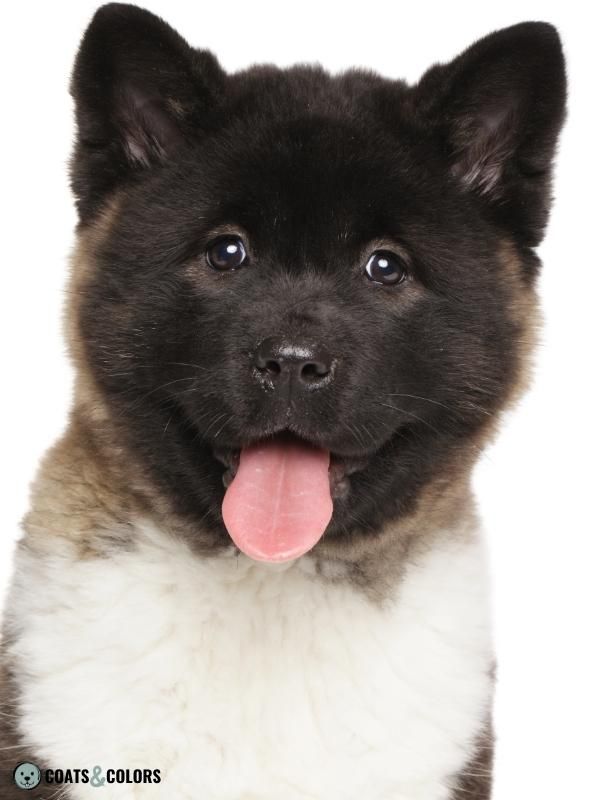
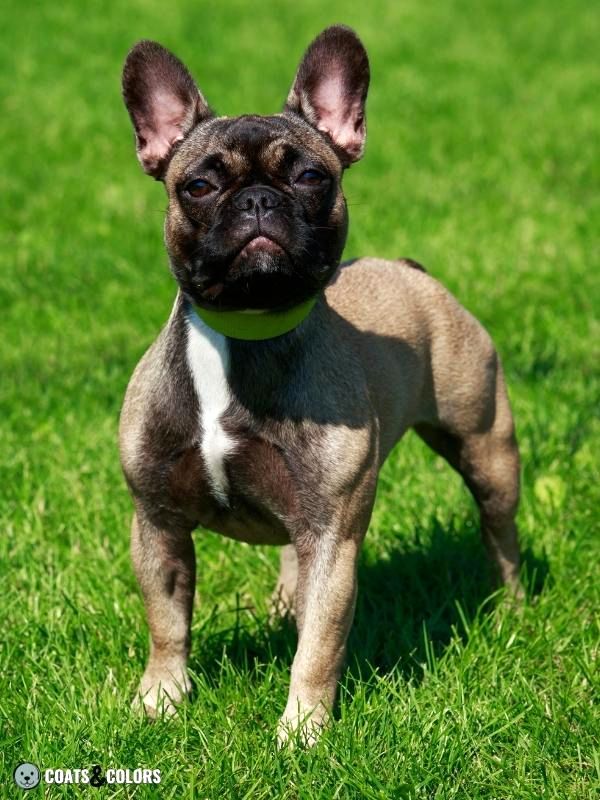
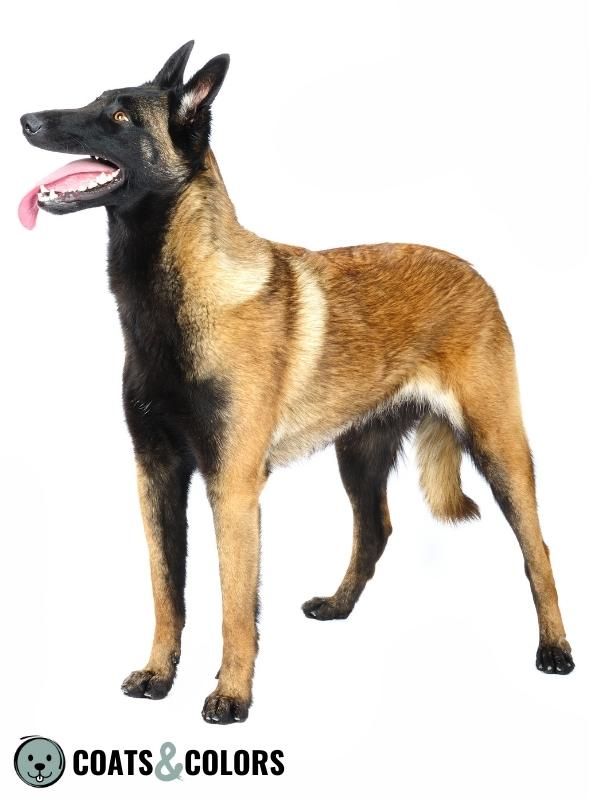
Color of Melanistic Masks
Since the melanistic mask has the same color as the rest of a dog’s eumelanin it can be black, brown, blue, or lilac. The color of a dog’s eumelanin is caused by the B locus and D locus.
Since the shade of the yellow pigment in patterned dogs can also vary from cream to red there are many possible combinations, e.g. a blue mask on a red dog or a brown mask on a yellow dog. It’s easy to spot a black mask, but some color combinations don’t exactly make a mask stand out.
Black Melanistic Masks
Black is the normal pigment color of eumelanin and the only acceptable pigment color in many breeds. In order to have black pigment, a dog has to be B/- at the B locus and D/- at the D locus.
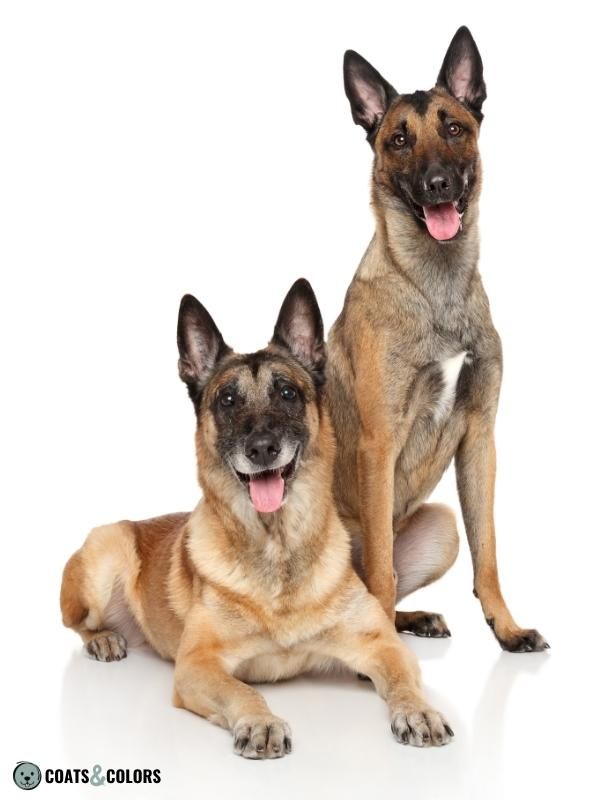

Brown Melanistic Masks
To express brown eumelanin, a dog has to be b/b at the B locus and D/- at the D locus.
Brown masks can be seen in some Rhodesian Ridgebacks and many Dogue de Bordeaux, but are not always visible against their orange-red base color. It’s easier to see a brown mask on fawn or cream dogs.
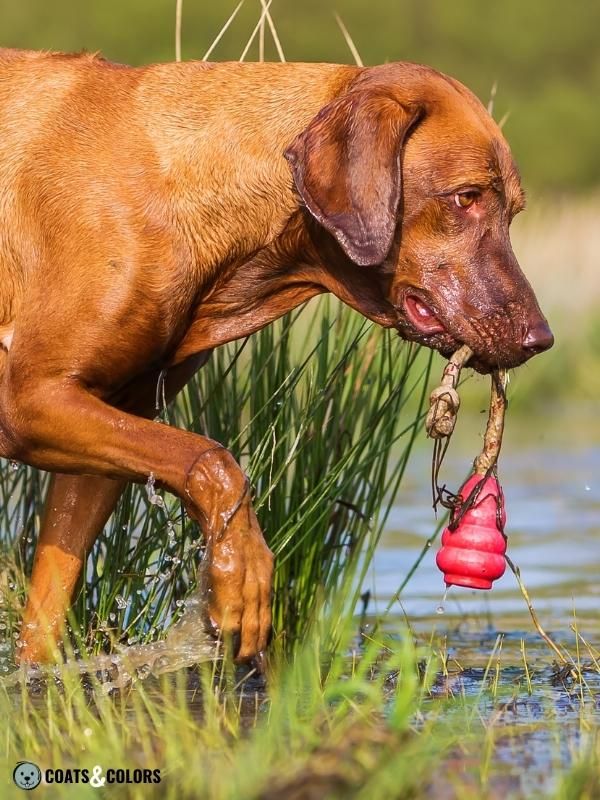
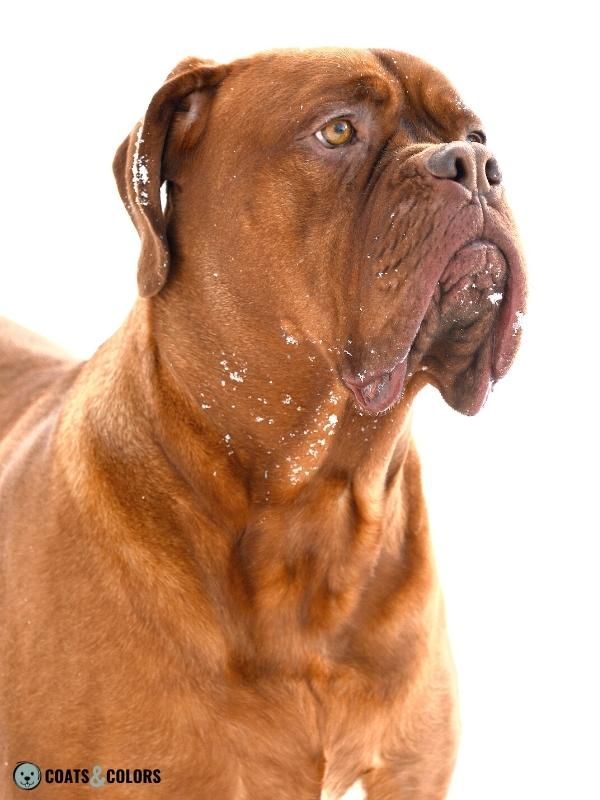
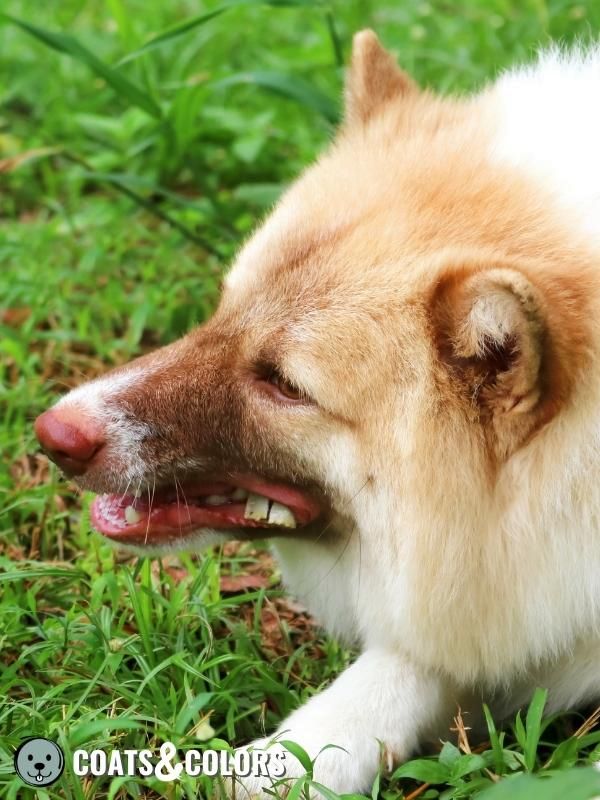
Blue Melanistic Masks
A combination of black pigment B/- at the B locus and color dilution d/d at the D locus causes blue eumelanin. This turns a black blue and will also affect all the other eumelanin, e.g. give a blue nose.
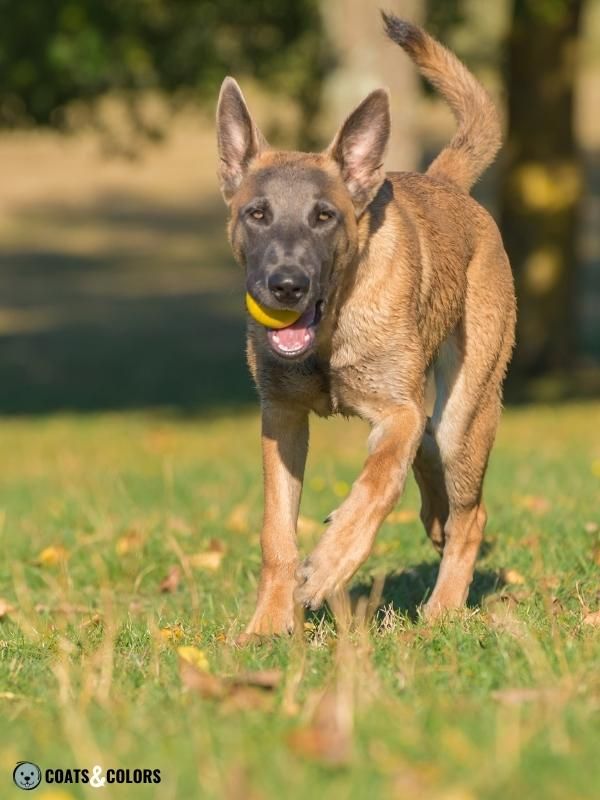
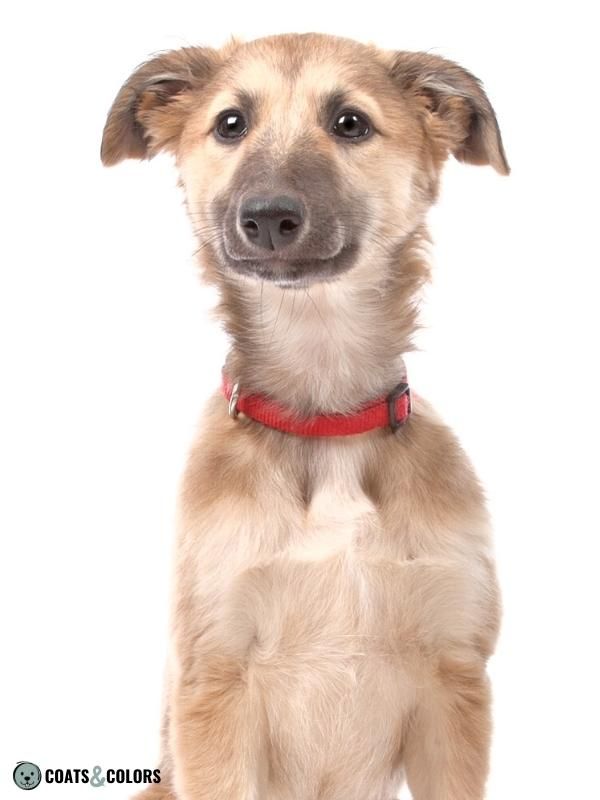
Lilac Melanistic Masks
Lilac (or: isabella, lavender, etc.) is a combination of two homozygous recessive genotypes, b/b at the B locus and d/d at the D locus. A lilac mask is diluted brown and can look mouse gray or taupe.

Melanistic Masks & Agouti
Agouti (ky/ky aw/- or kbr/- aw/-) produces a coat with banded dorsal hair.
Masked agouti is very common in German Shepherd Dogs (agouti is called sable in this breed!) or livestock guardian breeds, like the Caucasian Shepherd Dog.


Melanistic Masks & Tan Point
The melanistic mask is expressed “on top” of the pattern A locus pattern.
It can cover some or most of the tan markings on the face of a tan point dog.

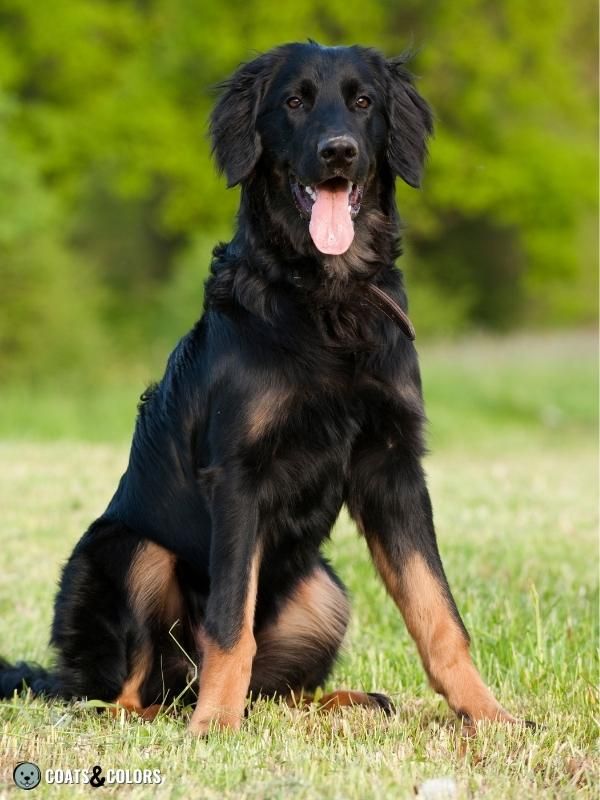
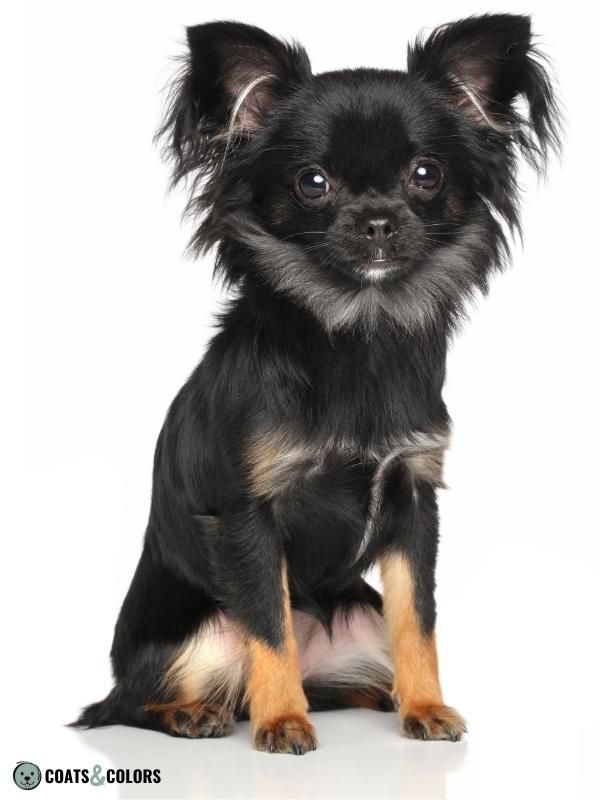
Melanistic Masks & Saddle Pattern
A masked dog with a saddle pattern will have a dark saddle on its back and a dark muzzle.
This is a common pattern in German Shepherd Dogs.
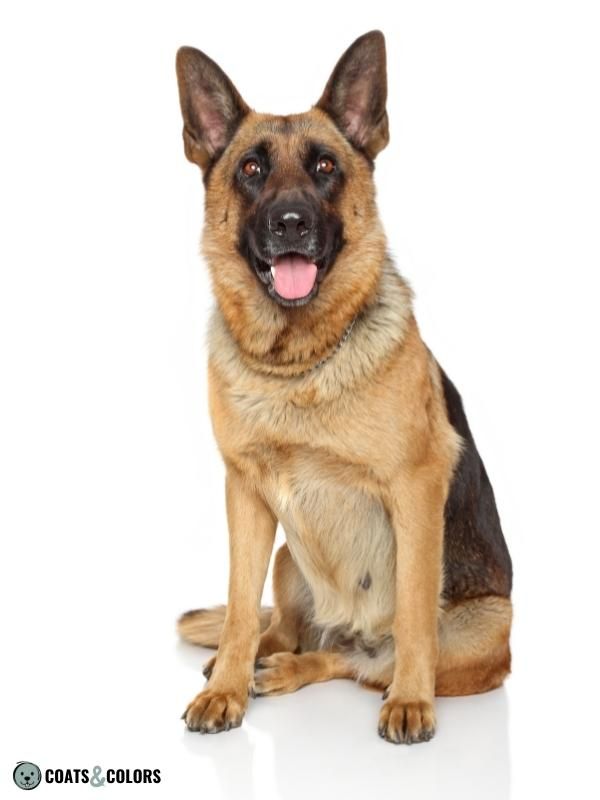
Melanistic Masks & Brindle
Brindle is only visible on dogs with yellow in their pattern (sable brindle, agouti brindle, saddle brindle, or brindle point). All brindle patterns can also have a melanistic mask.
This is a common combination in Boxers, Dutch Shepherds, Mastiffs, or French Bulldogs.
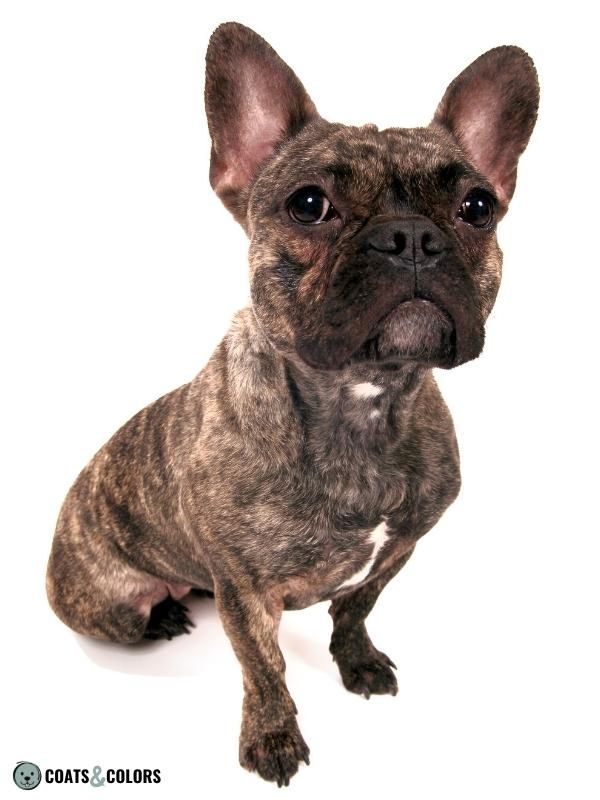
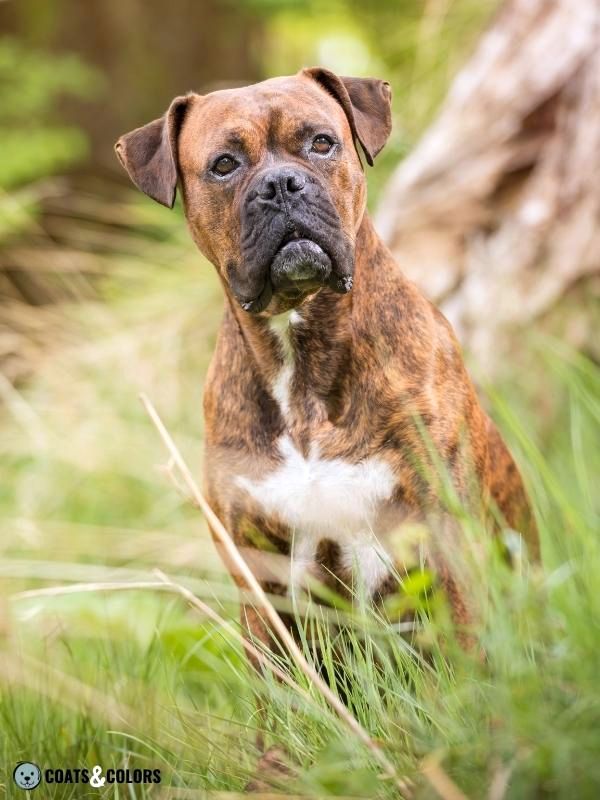
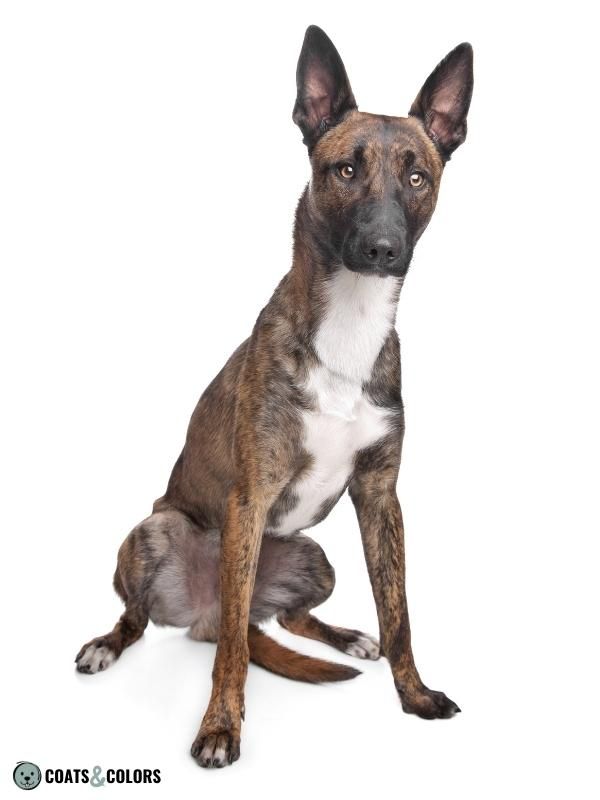
Melanistic Masks & White
White markings on the face (e.g. from piebald, or whitehead) can (partially) hide a melanistic mask.
Sometimes you can still vaguely see the outer edges of the mask. But the mask can be completely hidden in some dogs with more extended white on the face.

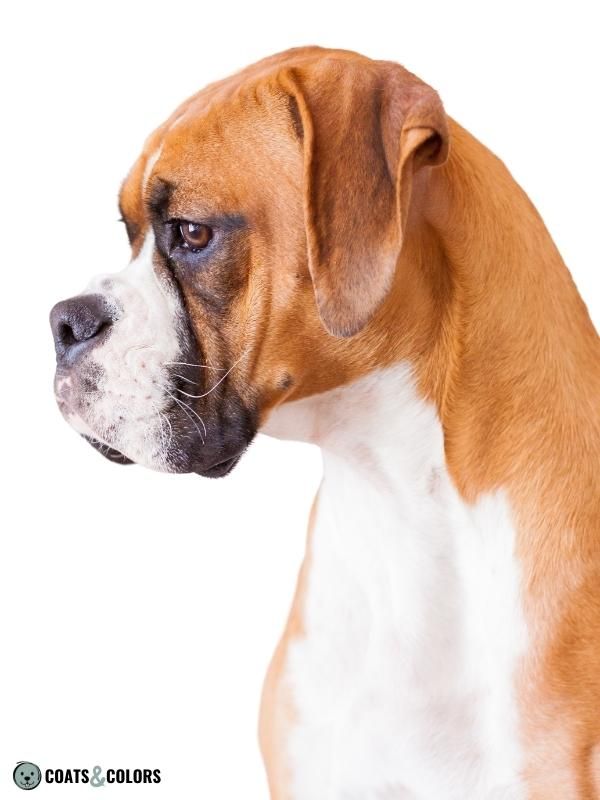
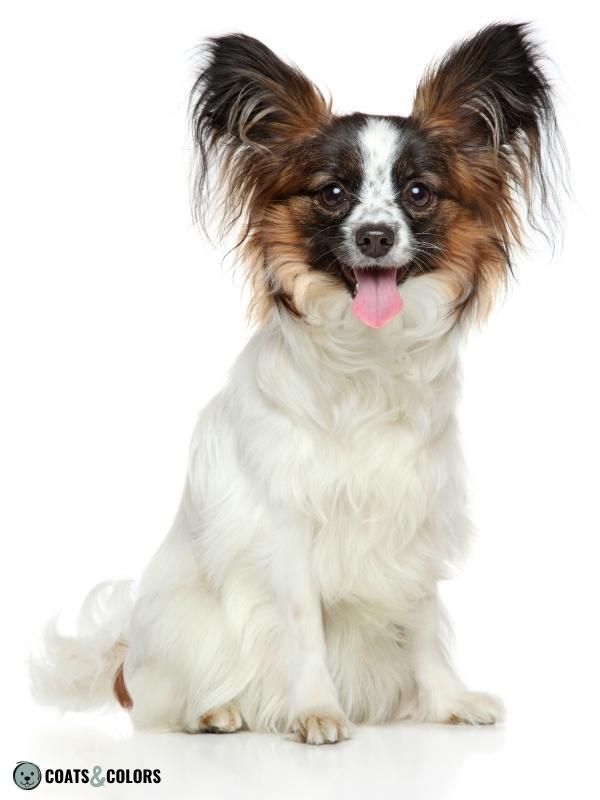
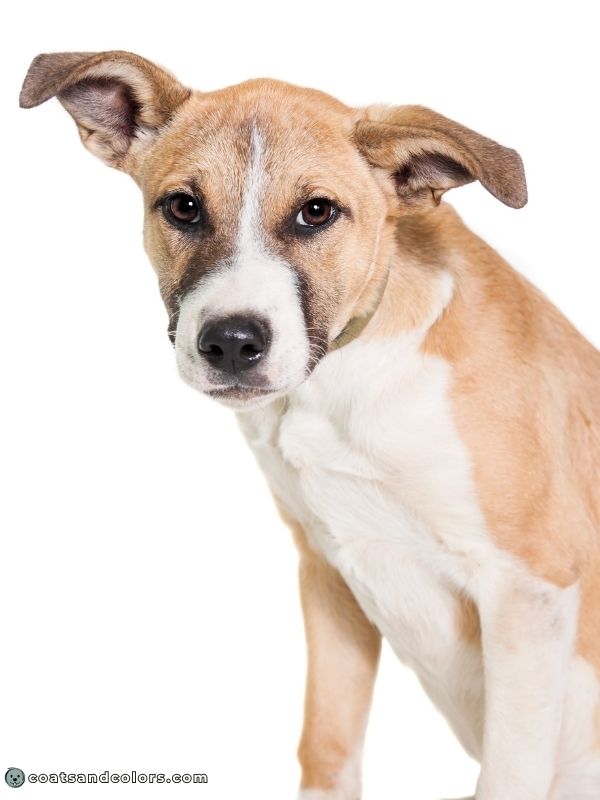
Some ticking or roan can give away that a dog has black on its muzzle.

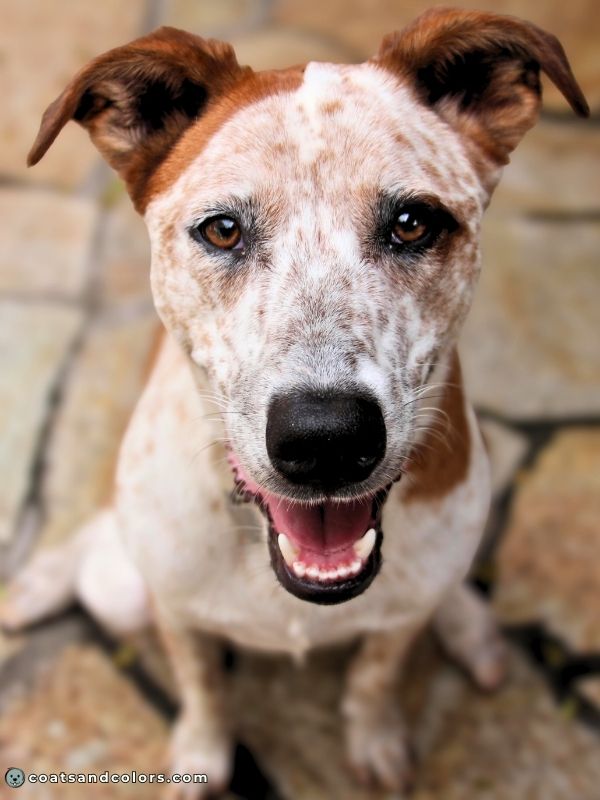
Watermarking
In some dogs with a sable pattern, white spotting, and an extended melanistic mask, we can observe distinct eumelanin borders pooling along the fringe of the sable patches. This effect is called Etching or Watermarking. But the reason behind this curious pattern is unknown.

Melanistic Masks & Merle
Merle dilutes some of the eumelanin in a dog’s coat and causes a somewhat random pattern of diluted and still fully pigmented patches. Merle will also dilute the eumelanin in a melanistic mask.
Some dogs still have a visible mask with random merled patches. But extended pigment deletion from merle can basically remove most of the mask, so the yellow from underneath can show through.
If a dog has random dark splotchy on an otherwise yellow muzzle, it likely had a mask that got cleared by a merle pattern. Merle only removes pigment, it can never add black to a pattern.
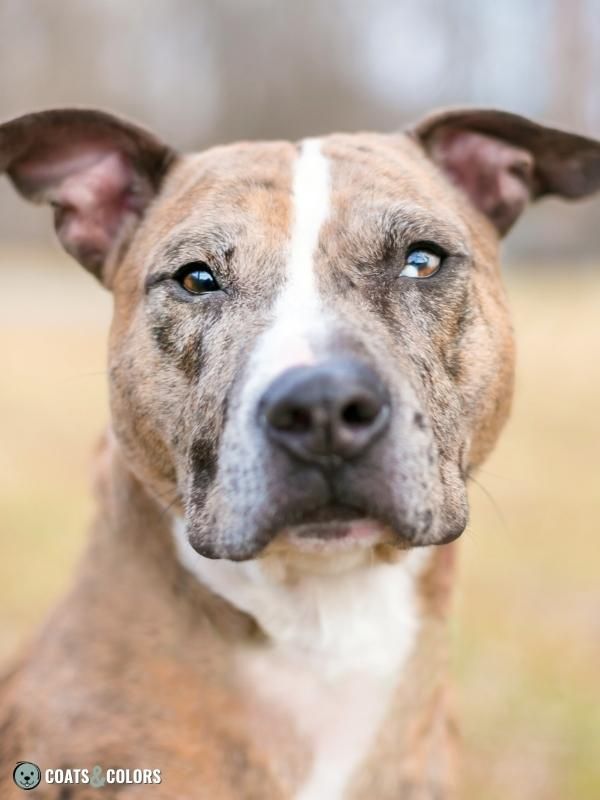
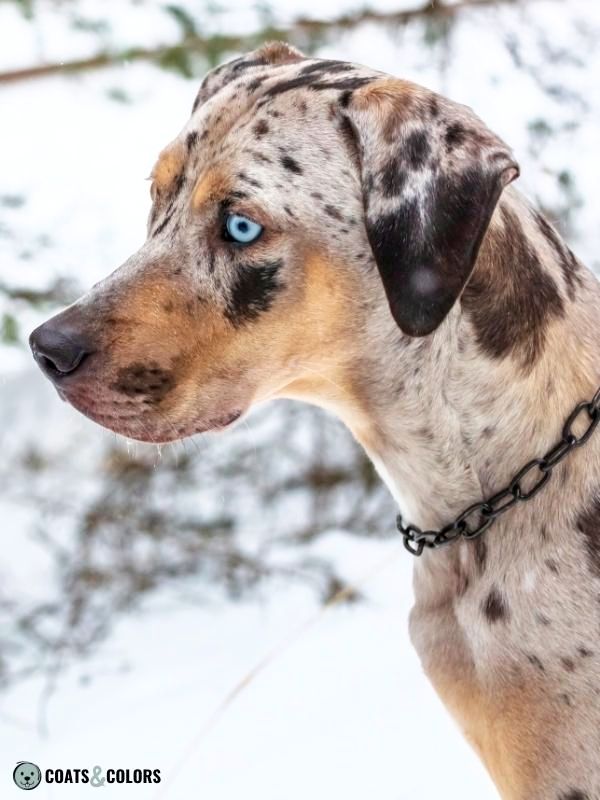
Melanistic Masks & Progressive Greying
In some dogs that express progressive graying, the mask seems to not be affected to the same degree as the rest of the eumelanin. This can leave a darker mask on a faded grey or beige coat.
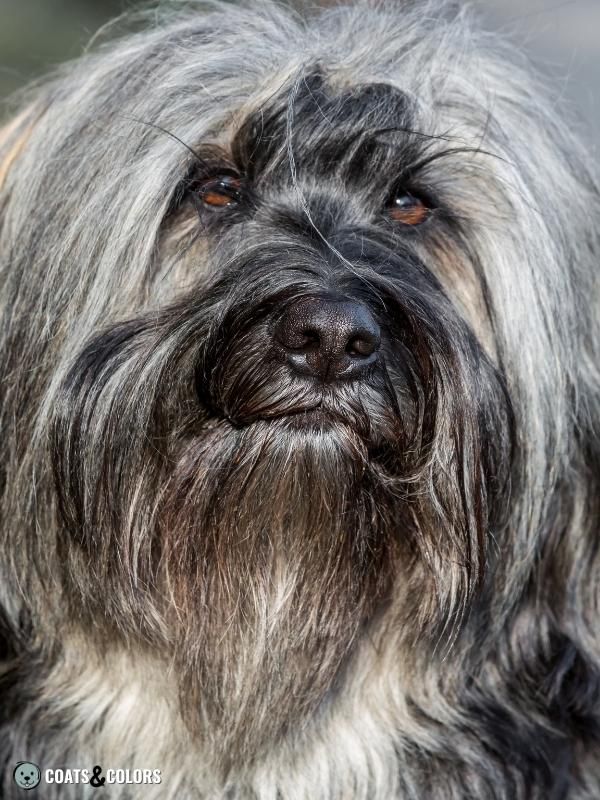
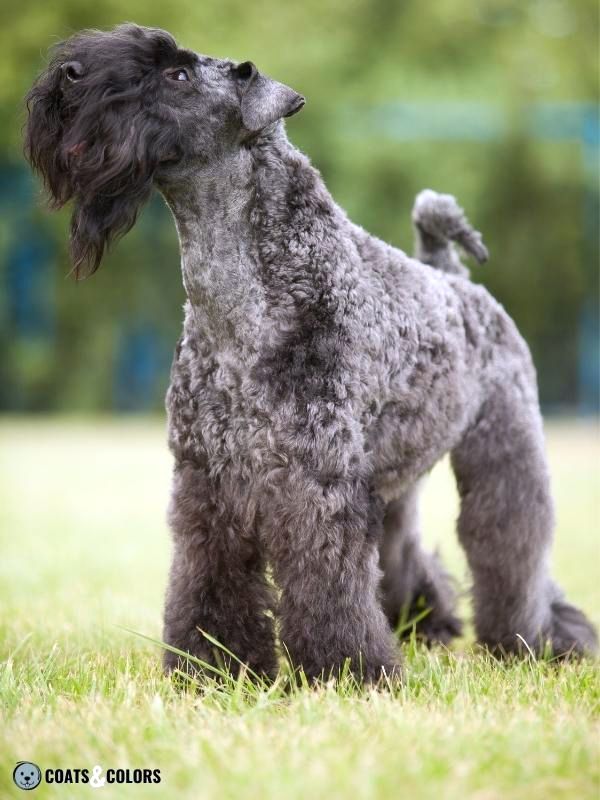
Dog Breeds with Melanistic Masks
The Em allele occurs in many dog breeds, not all accept it as a standard pattern[2]. But masks will go unnoticed in solid dark dogs (KB/- Em/-) and can be hidden in the gene pool. Here are some examples:
- Afghan Hound
- American Akita
- American Bulldog
- American Foxhound
- American Staffordshire Terrier
- Anatolian Shepherd Dog
- Australian Cattle Dog
- Australian Shepherd
- Azawakh
- Belgian Malinois
- Belgian Tervuren
- Bloodhound
- Boerboel
- Border Collie
- Border Terrier
- Borzoi
- Boxer
- Briard
- Bullmastiff
- Cairn Terrier
- Cane Corso
- Catahoula Leopard Dog
- Caucasian Shepherd
- Central Asian Shepherd Dog
- Chihuahua
- Dogue de Bordeaux
- Eurasier
- French Bulldog
- German Shepherd Dog
- Great Dane
- Greyhound
- Irish Wolfhound
- Italian Greyhound
- Keeshond
- Lhasa Apso
- Löwchen
- Mastiff
- Norwegian Elkhound
- Papillon
- Pekingese
- Pomeranian
- Presa Canario
- Pug
- Pyrenean Shepherd
- Rhodesian Ridgeback
- Saluki
- Scottish Deerhound
- Shar Pei
- Shih Tzu
- Skye Terrier
- Sloughi
- Smooth Fox Terrier
- Tibetan Mastiff
- Tibetan Terrier
- Whippet
Melanistic Mask Look-Alikes
These patterns are not caused by a melanistic mask or the Em allele:
- Ghost patterns can causes reddish undertones, but often leave a darker dorsal stripe and face, which can sometimes resemble a dark mask.
- Some white dogs seem to have a mask because they have black skin spotting and a very thin on their snout. This is often seen in brachycephalic dog breeds.
- Puppies often have grayish or dark masks that fade, never to return. These puppy masks often clear in the first few weeks or months after being born and are not related to Em.
- Other patterns without Em are sometimes called “masks“. The light open-faced pattern in domino Huskies (see Northern domino) or sighthounds (see grizzle domino) is often called a facial mask. And German Shepherd Dogs without their typical black mask are sometimes said to have a reverse mask.
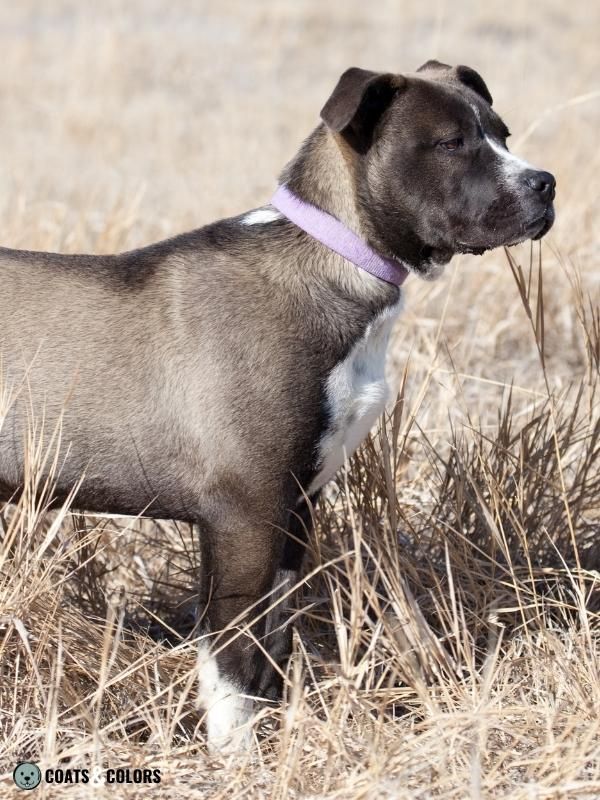
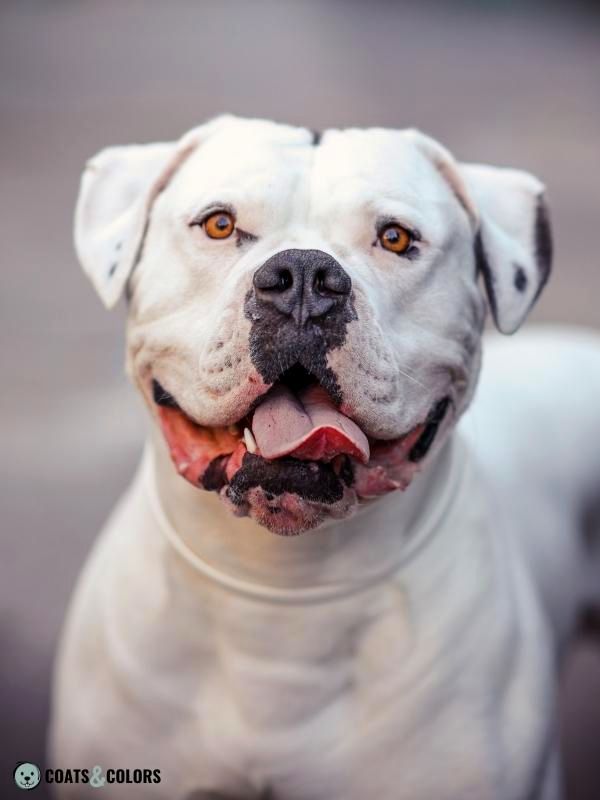

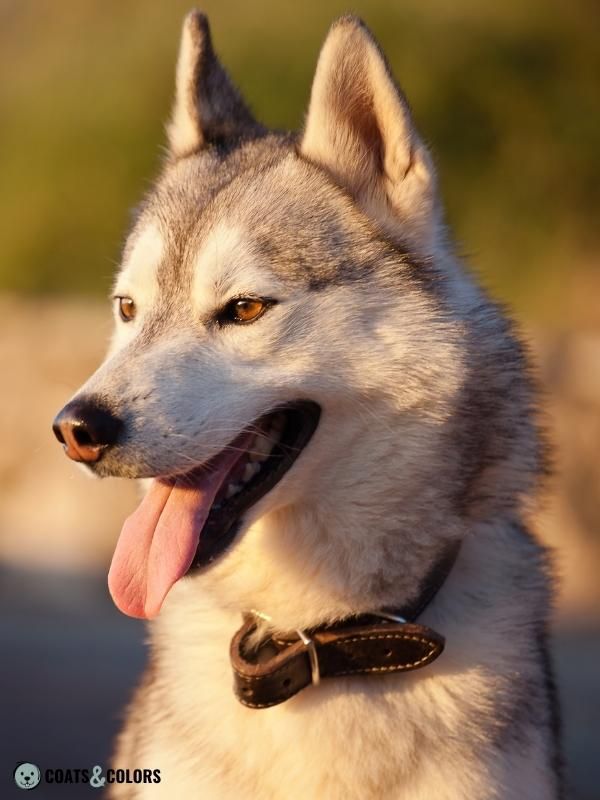
Learn More
Links
[1] Schmutz SM, Berryere TG, Ellinwood NM, Kerns JA, Barsh GS. MC1R studies in dogs with melanistic mask or brindle patterns. J Hered. 2003 Jan-Feb;94(1):69-73. PMID: 12692165. DOI: https://doi.org/10.1093/jhered/esg014
[2] Dreger DL, Hooser BN, Hughes AM, Ganesan B, Donner J, Anderson H, et al. (2019). True Colors: Commercially-acquired morphological genotypes reveal hidden allele variation among dog breeds, informing both trait ancestry and breed potential. PLoS ONE 14(10): e0223995. https://doi.org/10.1371/journal.pone.0223995
Image Credits
© RosaJay/yayimages.com
© Shawna Smith/pexels.com
© fotowebbox/yayimages.com
© Firn/canva.com
© cynoclub/yayimages.com
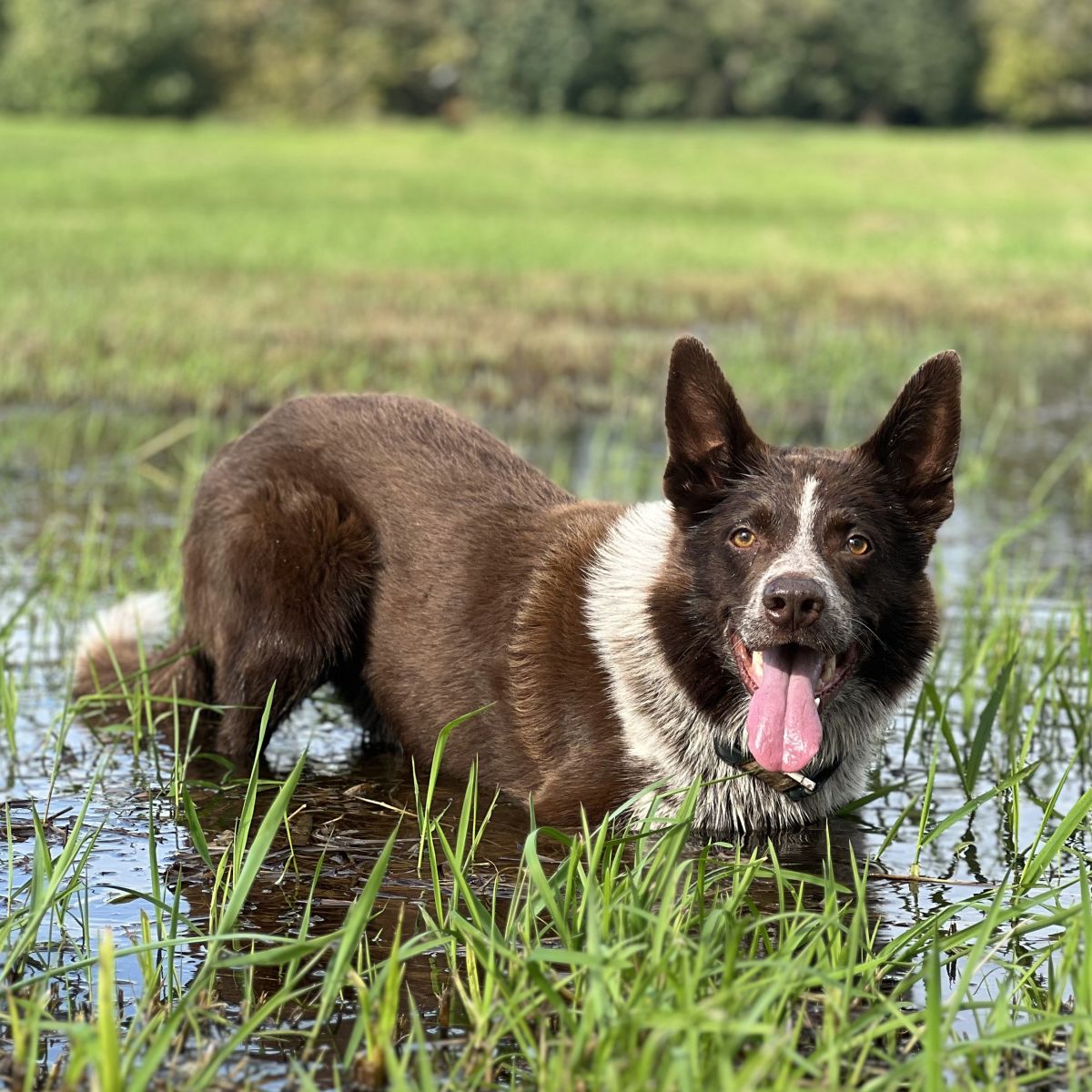
Hi! I’m Steffi. I am a biologist and a big time dog nerd. You are curious about coat color genetics? You’ve come to the right place! Read more.

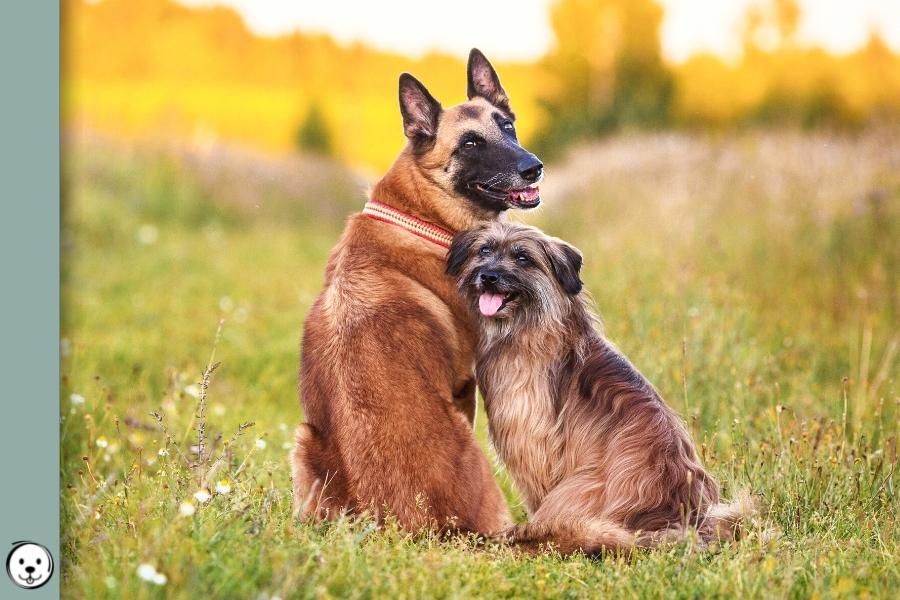
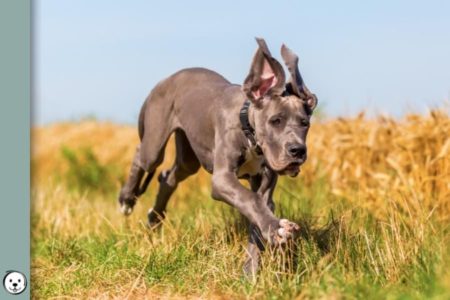
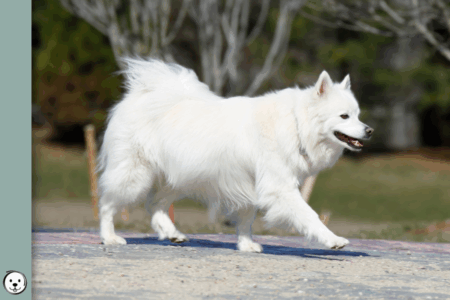

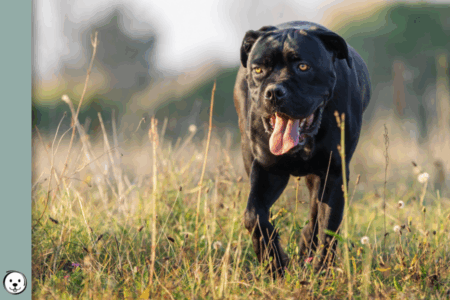
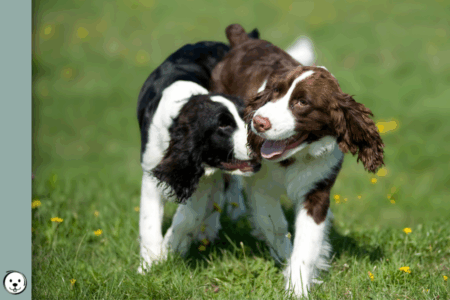
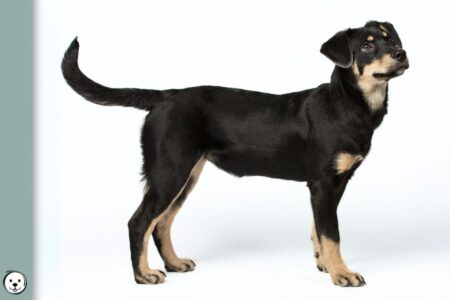
2 thoughts on “Melanistic Masks (Em)”
Comments are closed.